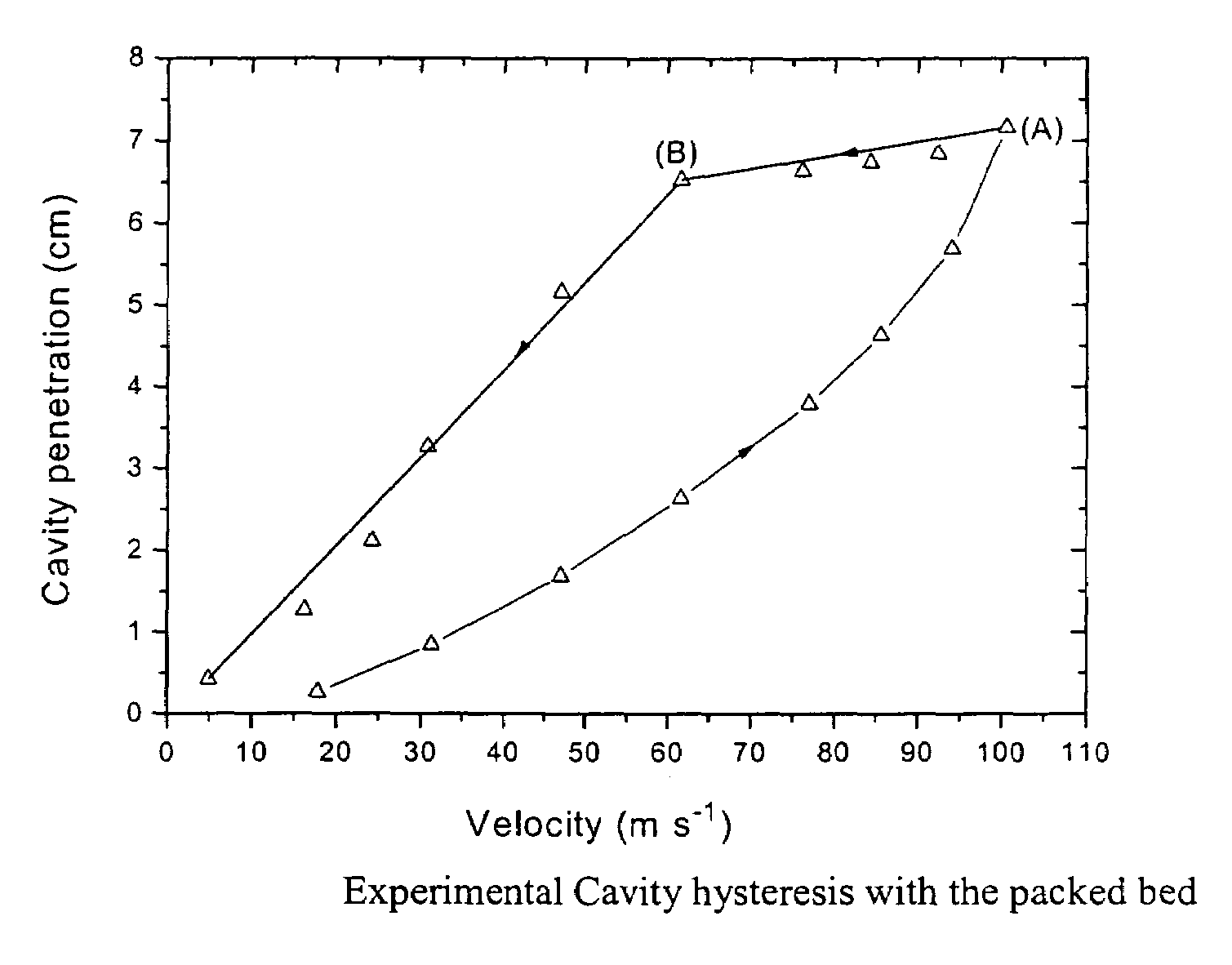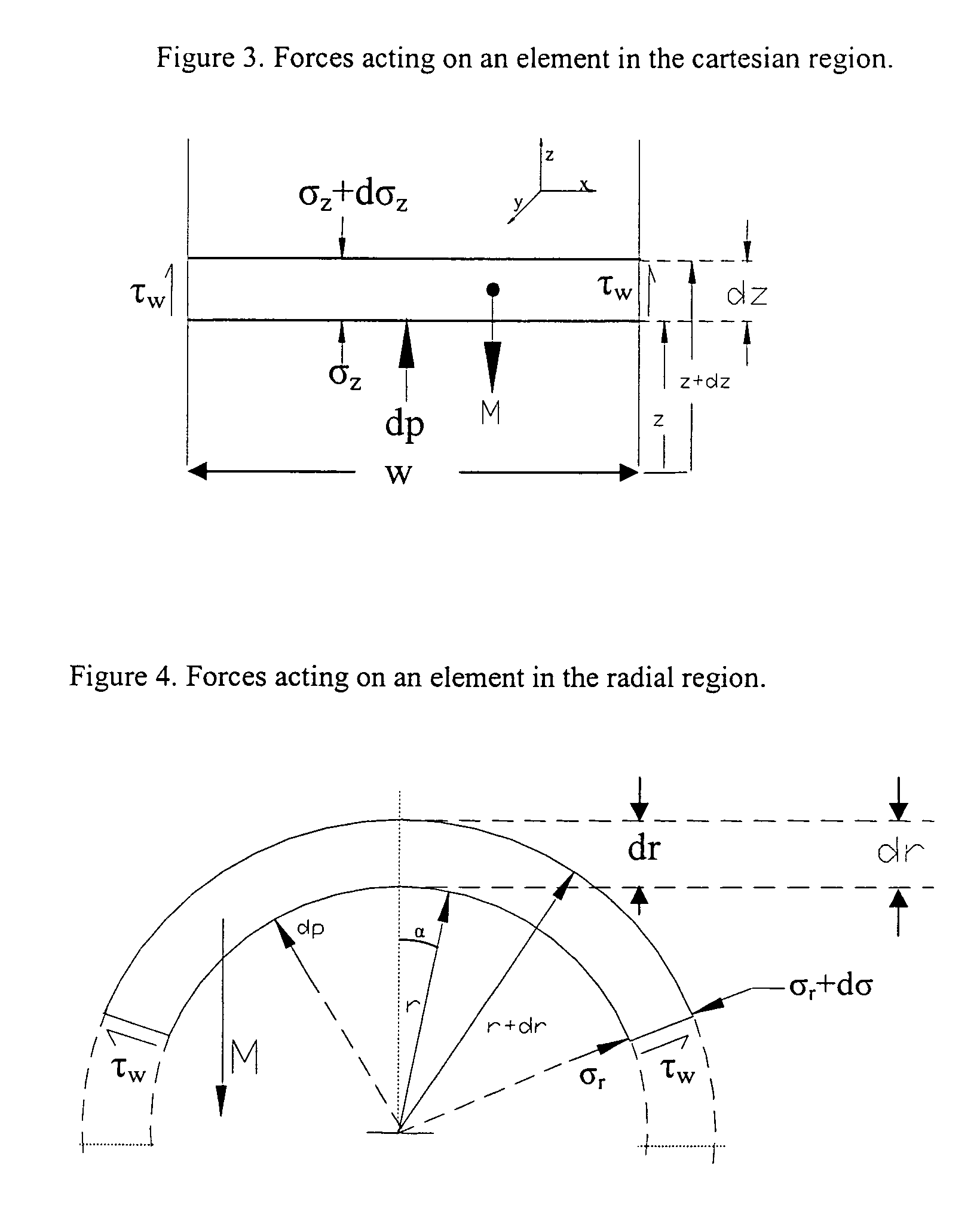Prediction of cavity size in the packed bed systems using new correlations and mathematical model
a cavity size and packed bed technology, applied in the field of cavity size prediction in the packed bed system using new correlations and mathematical models, can solve the problems of not predicting cavity size, unable to include it in their dimensional analysis, affecting the overall heat and mass transfer,
- Summary
- Abstract
- Description
- Claims
- Application Information
AI Technical Summary
Benefits of technology
Problems solved by technology
Method used
Image
Examples
examples 1 – 5
Examples 1–5
[0148]It was discussed in the beginning that many correlations have been proposed to predict the cavity size but they are not in agreement with each other. Now, it is the time to validate the proposed correlations and mathematical model to see whether they can represent the experimental data of other researchers'.
[0149]FIG. 12 shows a comparison of raceway diameter obtained using the correlation and published experimental values for a 2D cold model (Flint and Burgess (1992)). The experimental values of the raceway diameter have been obtained for polystyrene beads of diameter 3 mm, bed height from the tuyere level 800 mm, and tuyere opening 5 mm. Angle between the wall and particle was taken 18 (F. Born, B. E. (Hons) Thesis, University of Queensland, Australia, 1991). Other values are given in Flint and Burgess (1992). Average raceway diameter was used in plotting the value as data were available for raceway penetration and raceway height. There is good agreement between ...
examples 6 – 8
Examples 6–8
[0157]It was mentioned in the prior art section that raceway size obtained in decreasing gas velocity is more relevant to operating blast furnaces than increasing gas velocity. It is because large amount of coke is consumed near the raceway during combustion and in reducing the ore. This coke is replenished from the top of the raceway. Also intermittently iron and slag is tapped from the bottom due to which coke descends. It has also been found (MacDonald & Bridgewater, 1993) that the decreasing gas velocity condition is applicable to the case of a moving bed as in the case of blast furnace. It was observed that the horizontal injection into a moving bed gives effects similar to those encountered with vertical injection into a moving bed. So the decreasing correlation results can be applied to the moving bed irrespective of whether there is horizontal or vertical injection of the gas.
[0158]All the previous correlations, which have been given for the raceway penetration t...
example 9
[0167]The model developed here has provided a basic frame work to describe the complex phenomena of hysteresis in packed, fluidized and spouted beds including the stresses (between the particles and wall and particles) in a force balance which include gas drag and particles weight. At this point, it is important to make some comments on the nature of the equation (21). Stress can be estimated using equation (21). From this equation it can be seen that σr is strongly dependent on the pressure drop in the bed. Under fluidized bed condition, the bed weight is equal to pressure drop and thus σr would be zero. If pressure drop is greater than bed weight then σr may become negative. However, in the packed bed, particles are in contact with each other and with the container wall therefore, σr may not achieve a negative or zero value unless the bed approaches fluidized condition. This is an important conclusion as Apte et al. (1990) assumed that σr could achieve a negative value above the c...
PUM
| Property | Measurement | Unit |
|---|---|---|
| velocity | aaaaa | aaaaa |
| thickness | aaaaa | aaaaa |
| thickness | aaaaa | aaaaa |
Abstract
Description
Claims
Application Information
 Login to View More
Login to View More - R&D
- Intellectual Property
- Life Sciences
- Materials
- Tech Scout
- Unparalleled Data Quality
- Higher Quality Content
- 60% Fewer Hallucinations
Browse by: Latest US Patents, China's latest patents, Technical Efficacy Thesaurus, Application Domain, Technology Topic, Popular Technical Reports.
© 2025 PatSnap. All rights reserved.Legal|Privacy policy|Modern Slavery Act Transparency Statement|Sitemap|About US| Contact US: help@patsnap.com



